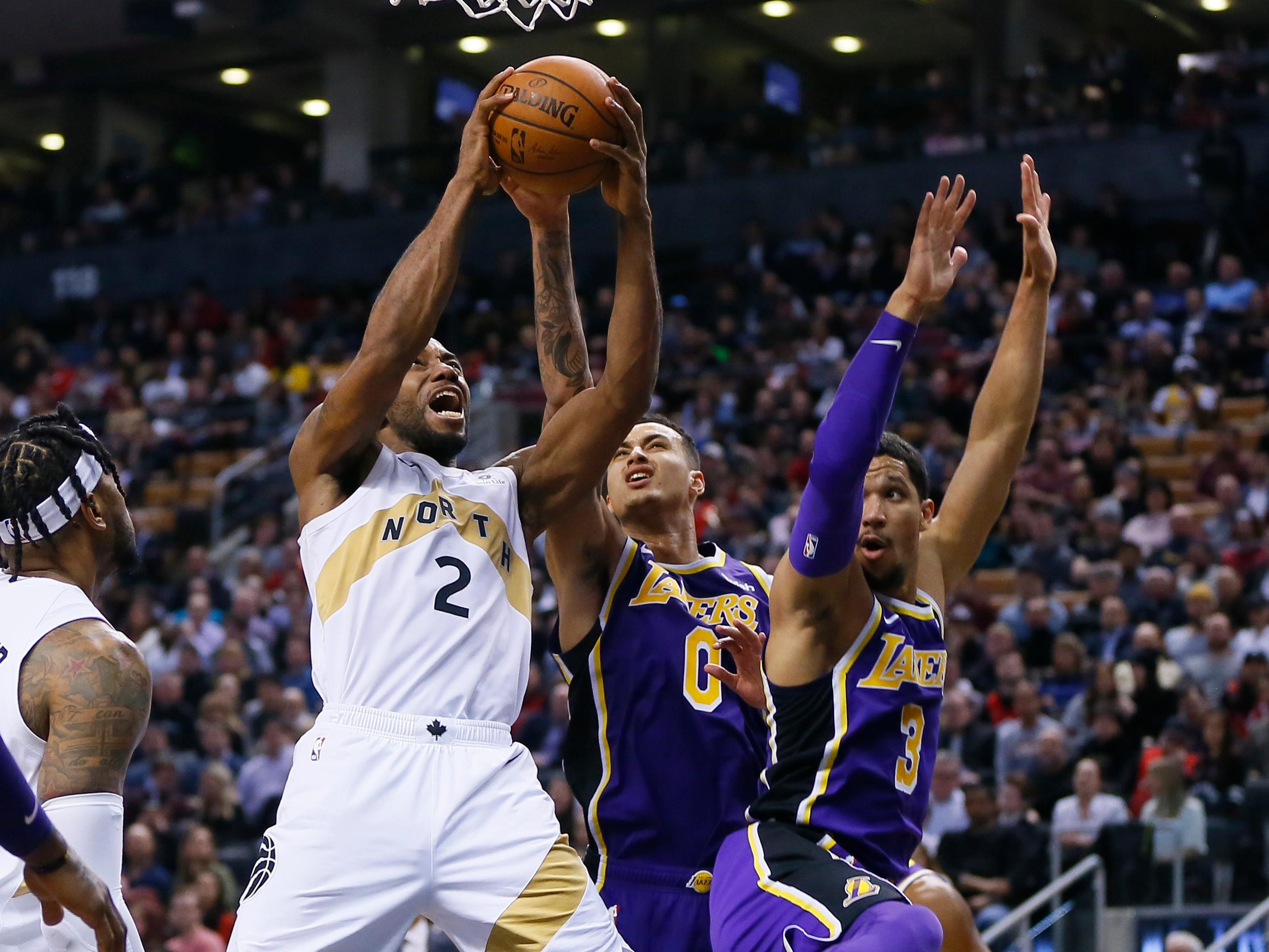
Kawhi Leonard is known for his silence. But watch him drive to the hoop, and that seemingly quiet exterior breaks. As Leonard fights through contact, every grunt, scream, and “And one!” call (there are a lot of them) gets picked up by the court microphones and amplified into our living rooms. The sounds can feel out of place for a guy who is famous for carrying himself like a fly on the wall inside a league full of personalities, and throughout Leonard’s career, his game has had to speak volumes. But this season, it has voiced something more muted.
Leonard has been cruising through his first season as a Raptor. Coming off a quad injury and a tumultuous last ride in San Antonio, Leonard has taken one of two games off on every back-to-back this season and in the process made “load management” a meme and fixture of strange basketball lexicon. On Thursday night against LeBron James and the Lakers, Leonard played in just his 50th game of the season (out of a possible 69), and his performance was an encapsulation of what he’s been doing all season: He played efficiently in controlled minutes (finishing with 25 points in 32 minutes on 20 shots, with five made 3s, eight rebounds, four assists, and two steals) and did enough to lead Toronto to a 111-98 win. The Raptors are now 12-4 over the last 16 games, safely positioned as the East’s 2-seed, and just two and a half games back of the top-seeded Bucks.
Through all of this, it’s felt like Leonard has barely had to exert himself. Over those last 16 contests, he’s averaged 24.9 points on 31.7 minutes a game. It was fitting, then, to watch him put up efficient numbers again on Thursday against LeBron, who’s been averaging almost a triple-double this season (before the Lakers waved the white flag on their playoff chances) and still not getting the win. Leonard’s output also stands in stark contrast to that of James Harden, as Harden had to put together one of the best scoring stretches in NBA history in order to single-handedly keep the Rockets from capsizing early in the season.
This, of course, is all a testament not just to Leonard’s ability to effortlessly put up sizeable numbers, but to the Raptors’ system and the talent development of the rest of their roster. Pascal Siakam’s leap, the exorbitant depth of the team’s bench (the unit scored 43 points Thursday), and the acquisition of Marc Gasol at the trade deadline has set up the ideal situation for a player like Leonard to do what he does best: score and play suffocating defense. And it goes beyond that. Kawhi also has enough support to flip an extra switch when needed; when it’s not, he can sit back and put together an average game because that will likely be good enough. It’s not a strategy per se—Leonard’s limited minutes are more of a precautionary measure (plus a way to stay in the good graces of a player the franchise is trying to keep) than a Nick Nurse scheme—but the fact that it’s working effectively is promising both now and for the postseason.
Toronto is on a 58-win pace, which is just one game off last season’s wins total. It’s a meaningless number, as the Raptors earned the no. 1 seed last year and still got swept by the Cavs in the second round. The success of the franchise’s gamble on Leonard will depend on the team’s playoff performance—and Toronto is much more likely to make a deep run this time around. Leonard will likely play at an enhanced level in the postseason, with more minutes to work with. Call him “playoff Kawhi,” “anti-load management Kawhi”, or just “real Kawhi”—the one we got used to seeing in San Antonio—but we should expect to see a fully unleashed version of him come April. Leonard’s numbers this season have been good enough to get him a All-NBA team spot, but it still feels like he’s only scratching the surface. Leonard’s five made 3s on Thursday were a rarity—he’s shooting 36.3 percent from deep this season, two percentage points lower than his career average. His 27 points a game are a career high, and yet it feels like that number could be 30 if he really wanted it to be.
One thing we shouldn’t forget is how good Leonard can be when the stakes are higher. Even if he’s been relatively subdued this season—or at least, not as flashy as his more MVP-worthy peers—it feels like both Leonard and the Raptors are saving something for the playoffs. After starting the season 20-4, things have settled into a calm for Toronto—but given that the team’s best player still has a higher level he can reach, the Raptors are set up well to make some noise.